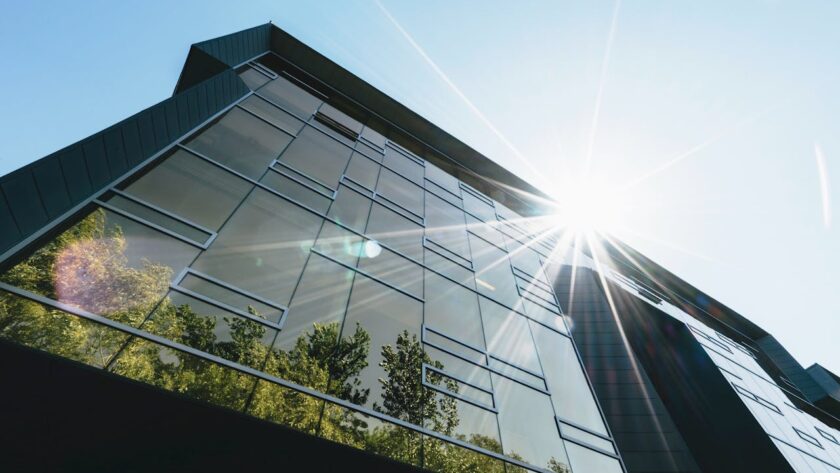Key Takeaways
- Dive into the essential elements of sustainable construction.
- Uncover the environmental, societal, and economic advantages of eco-friendly building approaches.
- Discover tangible examples through case studies and industry successes.
- Analyze the challenges hindering the progress in sustainable practices.
- Explore the promising future of the sustainable construction landscape.
Table of Contents
- Introduction
- The Pillars of Sustainable Construction
- Case Studies: Successes in Sustainable Building
- Building Materials Matter
- Energy Efficiency in Construction
- Water Conservation Techniques
- Economic Incentives for Sustainable Construction
- Challenges and Barriers to Sustainable Construction
- The Future of Sustainable Construction
- Conclusion
Introduction
The sustainability revolution in construction indicates our growing awareness of the environment and the responsibility of industries that impact it. With its significant impact on natural resources and global carbon emissions, the construction sector is at the forefront of the green movement, promoting innovation and ecological awareness. The transformation of this industry is not optional but crucial for the well-being of future generations.
The Pillars of Sustainable Construction
Sustainable construction is not just about building; it is a holistic approach encompassing environmental stewardship, economic viability, and social responsibility. Companies like New York based MBE-certified, Apex Building Group, and certified as a minority-owned business are leading the way in this change by seeking to balance building infrastructures with preserving the planet. Creating eco-friendly architecture goes beyond just constructing walls and roofs. It involves designing spaces that positively impact the environment and ensure the health of its occupants. From the careful extraction and processing of raw materials to innovative waste reduction and management during construction, the commitment to sustainability is evident in every step.
These principles translate into tangible benefits, often seen in reduced operational costs, courtesy of more efficient resource use. Energy conservation and water-saving strategies benefit the planet; they lead to considerable lifecycle cost savings for property owners. Then, there are innovative solutions like these galvanised foundation screws, for instance, which can provide long-lasting structural stability while minimizing environmental disruption. Similarly, prefabricated components and advanced insulation techniques enhance efficiency and sustainability, ensuring that modern buildings align with ecological and economic goals. Moreover, such practices create healthier living environments, boosting the comfort and productivity of building occupants. The core of sustainable construction lies in the well-being it engenders for both nature and humanity.
Case Studies: Successes in Sustainable Building
Exemplary projects worldwide serve as real-life testimonies to the positive impact of sustainable construction practices. These projects showcase the feasibility of integrating green design with aesthetic appeal and functionality. They highlight how environmentally responsible choices during the building process can culminate in award-winning structures renowned for innovation and commitment to sustainability goals. The knowledge gained from these developments offers valuable insights for scaling up these practices industry-wide.
Building Materials Matter
Material selection is critical for sustainable construction. Green materials like bamboo, recycled plastic, and reclaimed wood are eco-friendly alternatives to traditional materials. They require less energy to manufacture and reduce landfill waste. Using these materials is vital for sustainability and is well-documented in resources like magazines.
Energy Efficiency in Construction
Enhancing energy efficiency is one of the primary objectives of sustainable construction. It involves implementing various strategies, from insulating to perfection, and introducing intelligent systems controlling lighting, heating, and air conditioning. Utilizing energy-efficient appliances complements the building’s design in reducing consumption and utility bills, culminating in a significant return on investment over time. As such, energy efficiency in construction mitigates the environmental stress and delivers financial benefits to the stakeholders.
Water Conservation Techniques
Water conservation in construction is crucial. Low-flow fixtures, rainwater harvesting, and efficient irrigation systems reduce waste. Sustainable water management practices address immediate needs and ensure long-term availability. The philosophy is that every drop counts, making water efficiency the norm in construction projects.
Economic Incentives for Sustainable Construction
Governments and environmental groups offer incentives like tax credits, grants, and rebates to promote sustainable construction. These incentives offset higher costs and encourage wider adoption. Construction Dive shows how these incentives make investing in green strategies financially wise.
Challenges and Barriers to Sustainable Construction
Achieving fully sustainable construction is a difficult task despite its many benefits. There are still several challenges that need to be addressed. One of the most significant barriers is the high initial cost of using sustainable materials and technologies, which can deter some people. Additionally, there is a need for more professionals skilled in green building methods, a critical skills gap. Another obstacle is the resistance to change, as some stakeholders are yet to be convinced of the practicality and effectiveness of these eco-friendly alternatives. To make sustainable construction a reality, the industry needs to work together to educate people about the long-term benefits of sustainability.
The Future of Sustainable Construction
The horizon of sustainable construction is expanding with novel materials, breakthrough technologies, and advanced design methodologies emerging consistently. The industry is gearing up for a future where intelligent buildings with minimal environmental impact become the status quo. With the ever-growing popularity of sustainability, it’s expected that the next evolution of construction will see a deeper integration of natural elements, environment-responsive designs, and seamless inclusion of renewable energy sources.
Conclusion
The case for sustainable construction transcends beyond environmental advocacy; it is an integral process that aligns economic objectives with societal well-being. As the construction industry continues to evolve, it promises a future where sustainable practices are not just a choice but a natural component of every development. The embracing of these practices by everyone, from large corporations to individual builders, signifies the collective aspiration towards a greener, more responsible construction sector. Governments, creators, investors, and end-users can forge an environmentally sound legacy. A blueprint for future growth synchronized with the earth’s well-being by working in tandem.




